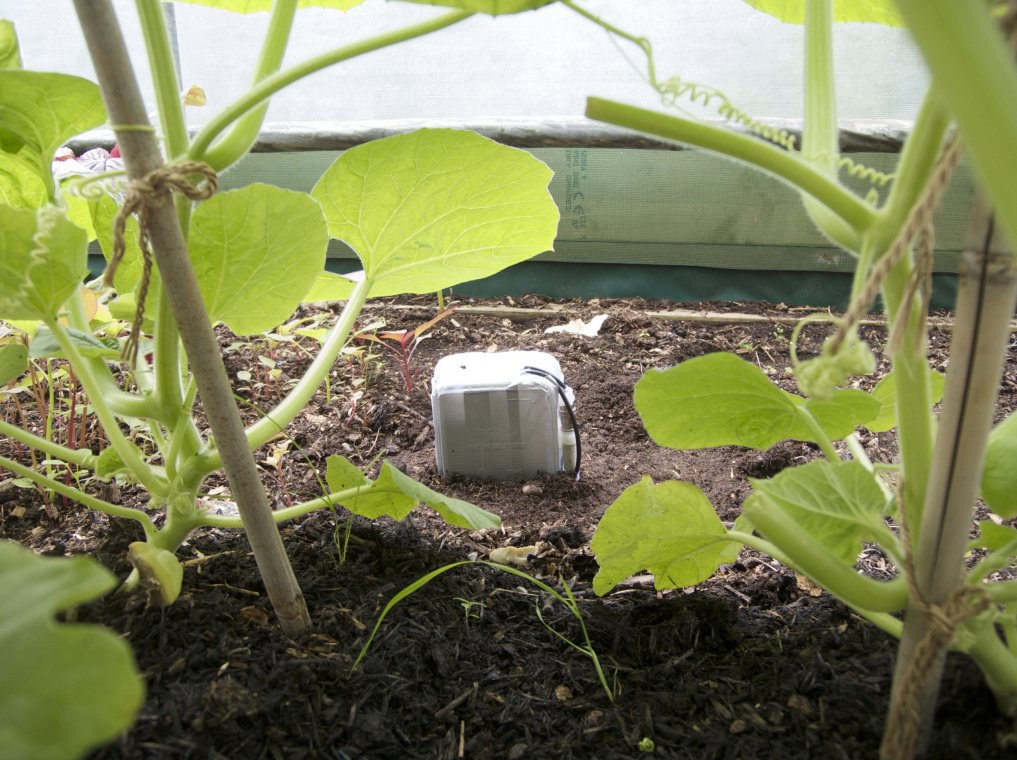Sensors
Digital, Networked and “Smart” Technologies in Community Urban Agriculture
By Hamed Haddadi, Queen Mary University of London
As digital and mobile technologies become smaller and cheaper, they have started to enter all aspects of our lives. The Internet of Things (IoT) refers to the proliferation of sensors, devices, and data processors connected together and to the Internet, that are now in our everyday objects. The term has been used in a variety of contexts such as connected domestic appliances and monitoring devices around cities and urban areas. Increasingly common examples include “smart” thermostats and washing machines that can be controlled from a mobile phone, and that “learn” their users’ preferences. The term “Smart Cities” refers to the monitoring and automation of urban processes through the Internet of Things. For example, the ability to monitor live bus arrival times from bus stops or your phone. The research challenge that sparked Connected Seeds and Sensors project was to explore how these digital networked, or “smart”, technologies could support more sustainable urban food practices.
Typically, “smart” technology for food-growing involves the use of networked sensors and other computational devices to automate monitoring and control of environmental growing conditions. The benefits are increased plant health and productivity, and, by optimising processes such as watering and heating, these processes may become more efficient and therefore more sustainable. However, little research has been conducted into IoT for small-scale and community urban agriculture. This is the gap our project aimed to fill.
Within the Connected Seeds and Sensors project, we aimed to collect information about the environmental conditions of the Seed Guardians’ gardens from networked sensors. These sensors included: air temperature, air humidity, air pressure, soil moisture, and ambient light. The sensor packs needed to be waterproof and robust. We needed to build a system of data collection that was reliable and energy efficient, in order to minimise the disruption to participants in terms of home visits, availability of WiFi and electricity, and the need for manual intervention and actions. Our platform had to run independently and reliably for a few weeks at a time without any disturbance to the user.
In order to address these challenges, we used the open source Arduino board, with high precision sensors embedded in a purpose-built packaging in order to protect the sensors, the battery pack, and the board from potential rain or moisture in the environment. We used a dedicated 3G network module to send the environmental data. A reading was taken from the sensors every hour, and, in order to save on battery life, sent once a day to a web server. We built and deployed sensor units to 8 of our Seed Guardians’ gardens, where they collected data for on average 3 months.
Sensor Data Visualisations
At the end of the growing season we hired a data visualisation company to make sense of, and visualise, the data we had collected over this period, in an engaging, interactive, easy-to-understand way. In addition to the quantifiable data produced from the sensors – represented by a graphical animation across a timeline – the visualisation also includes images and audio clips from the Seed Guardians.
View the data visualisations
Tech Specifications and Downloads
Circuit design, sensor specifications, and code from the project are available to view and download on GitHub.
View the files on GitHub

